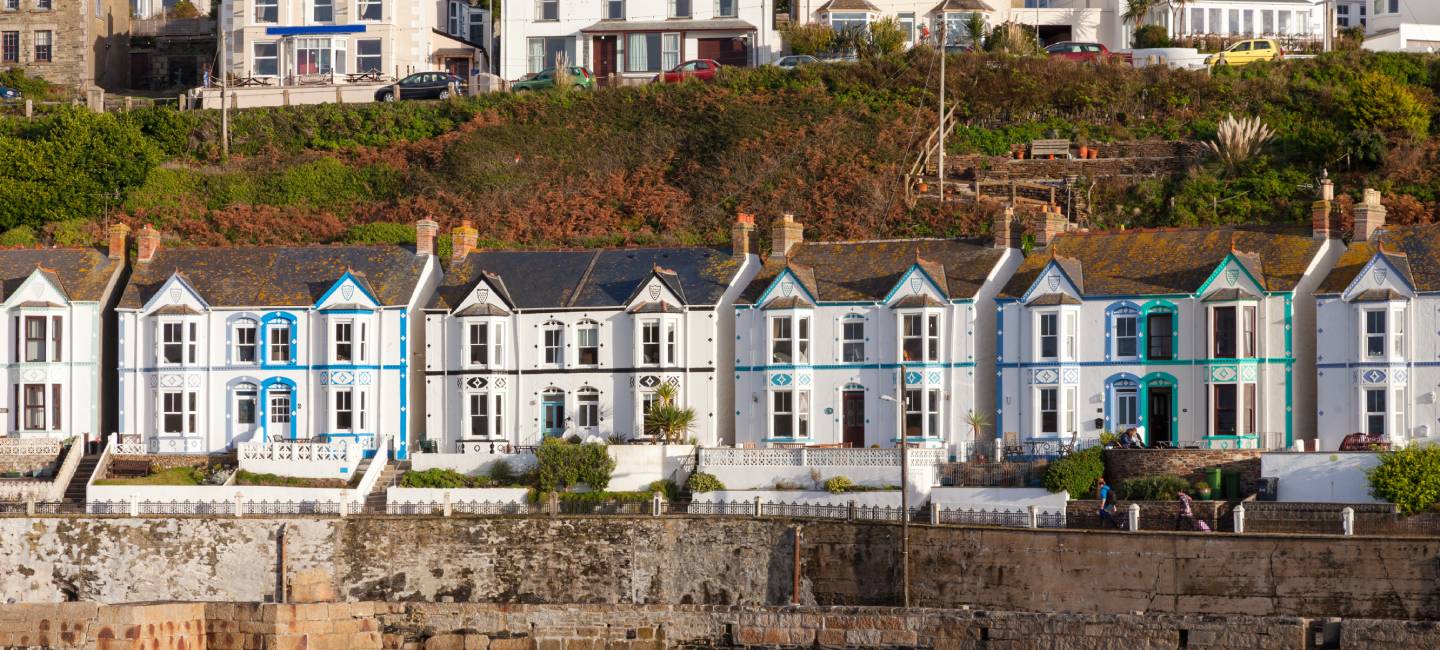
Are you thinking of swapping your current home for a property by the sea? It’s a popular retirement plan, but before you start property-hunting, it’s important to do your research.
While it could be the perfect way to enjoy your retirement, it could have more of a financial impact than you might think. We’ll explain the risks to consider, as well as good ways to find out more.
Coastal properties were in demand during the pandemic with the rush to get out of the city and have more space. For example, in March 2021, property searches for Cornwall outnumbered searches for London on Rightmove for the first time.
During the same period, the property portal also found that the average asking price of more than 100 coastal areas had risen by 4.5% compared to just 2.5% across Great Britain.
The picture is now a more mixed one. In spring 2025 estate agent Hamptons reported that many of the areas increasing the biggest price falls between 2022 and 2024 (after big rises during the pandemic) were by the sea.
These included Hastings, Thanet (home to Margate, Ramsgate and Broadstairs), Torridge in north-west Devon, Eastbourne, Torbay and Worthing.
In July 2025 Rightmove reported that demand for coastal properties is up 8% compared with last year, but that the top 50 coastal locations have seen a 1% drop in average asking prices.
Looking at potential seaside locations and their affordability, the south of England is popular because it tends to be warm and dry. Sandbanks in Poole, Dorset is the most expensive coastal location, where the average asking price is £1,282,565, according to Rightmove. This is followed by Canford Cliffs, also in Poole, at £974,635 and Milford-on-Sea in Hampshire at £728,460.
But there are pockets of affordability, particularly up north. Head for the Scottish coast, and the average property price in Saltcoats in Ayrshire is just £122,208. This is followed by Peterlee in County Durham at £122,246 and Ashington in Northumberland at £135,050. You could even enjoy the bright lights of Blackpool for not much more, with average asking prices at £142,804.
Greg Crosse, a director of estate agent Savills’ Exeter office, says that bungalows are the most-sought after type of property: “We have people who have got bigger houses but want to stay in coastal towns. They don't really want an apartment but want that lateral living. But bungalows are a bit like hen's teeth, especially if they have a coastal view. There are just not a lot of them.”
A top priority is to make sure your seaside home will be easy to sell if you need to. For example, you might need to move due to ill health, or if you’re somewhere that requires a car but can no longer drive.
Climate change is another important factor, with the risk of flooding and coastal erosion impacting on sales of coastal properties.
The government’s latest assessment of flood and coastal erosion risks in England, predicts that as many as 3,500 properties are in areas at risk of coastal erosion up to 2055 – half of which are residential.
Crosse warns that you should not underestimate this risk: “We had a house for sale that was not that close to the sea, but we thought it was a good idea for the owners to have a full cliff survey,” he says. “It came back saying that it would probably be encroaching on their garden within 100 years. People are then worried about reselling the property. If they live there for 10 or 20 years, how will that affect its value?
Paula Higgins, CEO of the property advice website HomeOwners Alliance, adds that there’s also the worry of getting a mortgage in areas that could be affected by landslides. “If you get a 20-year mortgage today, you may be fine,” she explains. “But if you go to sell in 10 years’ time, buyers might not get a 20-year mortgage.
She adds: “It’s not just coastal erosion, but it's the uncertainty of weather; it's the storms; it's flooding. There’s a lot you need to think about today, not just paying off your mortgage but if you want to sell it… if you want to hand something on to your children and grandchildren.”
Recent changes to council tax in England could dampen demand for second homes, which might affect you if you want to sell a coastal property in future.
A ‘second home premium’ of up to twice the usual council tax came into effect in April in England. This has been in place for over a year in Scotland, while in Wales it can be as much as 300%. (This doesn’t apply in Northern Ireland.)
Second homeowners will also pay an additional 5% fee on top of standard stamp duty in England and Northern Ireland, while Wales and Scotland have their own schemes at an extra 5% and 8% respectively.
“This extra stamp duty, also the council tax, is really starting to cut,” says Higgins. “It's quite hard to sell second homes now in places like Cornwall, in beauty spots. The locals don't want you there; the locals can't afford the homes; but there are no second buyers.”

There are also extra costs to consider once you move to the coast: buildings insurance is generally more expensive because of the risks of flooding, coastal erosion and other weather-related problems. If you’re still keen, it might be worth checking out Flood Re scheme. This is a joint government and insurance industry initiative that can help make flood cover more affordable.
You’ll also need to budget for the corrosive effects of salty air, strong winds and sun. You may need to decorate the exterior of your home more often, perhaps every two to three years instead of five to 10 years for properties inland.
With the cost of decorating the exterior of a terraced house (40 sq m) averaging £1,200 plus scaffolding hire at around £310 per week, according to tradespeople site Checkatrade, you can see how costs can mount up.
Many coastal towns have suffered from the decline of traditional industries such as fishing and tourism, leading to deprivation and poorer health outcomes, according to the University of Plymouth’s On the Waterfront report in March 2025. So find out whether your hobbies and interests are well served by an active community, and make sure you understand what health services will be available in the local area. This should include access to a nearby hospital and A&E services.
Whether for work or to stay in touch with family and friends, check broadband speeds and connectivity, particularly in remote coastal areas – 5G may not be available in some far-flung parts of the country until 2030.
Not all coastal towns have a railway or good transport links either – which might be an important consideration for seeing family and friends.
On the other hand, if your preferred location is a tourist hotspot, your neighbours may let their homes to holidaymakers. You could see a steady flow of strangers over the summer, while houses and shops are deserted out of season.
If you have your heart set on retirement by the sea, here are a few tips to help you make an informed decision:


Provided by Tembo
Find out all you want to know about mortgages with expert advice.


Find out the pros and cons of downsizing to cut your IHT bill.

This guide covers ways you can help, mortgage options, and legal implications.